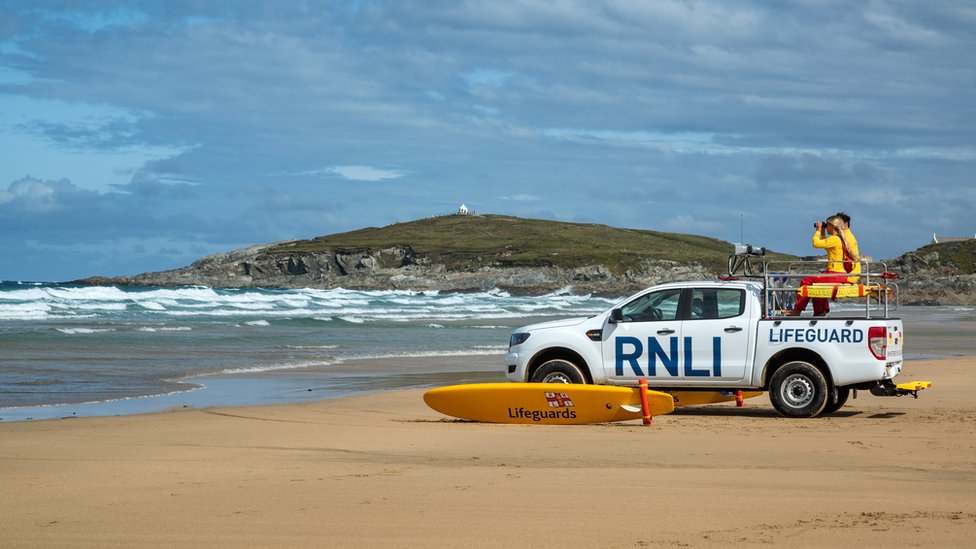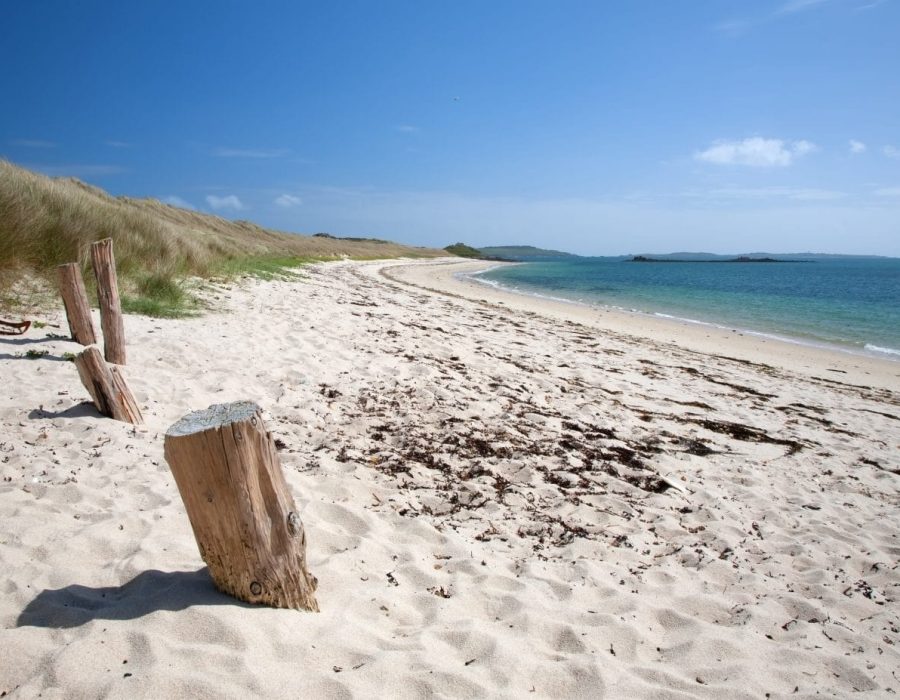Planning a trip to the beach this summer? The RNLI offers guidance on ensuring the safety of you and your loved ones below.

Opt for a Lifeguarded Beach
Choose a beach with lifeguards on duty. These trained professionals are there to ensure your safety both in and out of the water. Feel free to approach them for advice or assistance during your visit.
Understand Flags and Signs
Lifeguarded beaches display various flags indicating safety conditions.
Familiarize yourself with these symbols to know whether it’s safe to swim and engage in specific water activities.
- Red and yellow flags: Indicates a lifeguarded area, safe for swimming, bodyboarding, and using inflatables.
- Black and white chequered flags: Designates areas for non-powered watercraft like surfboards and kayaks. Swimming or bodyboarding in these zones is prohibited.
- Red flag: Warns of danger; swimming is strictly prohibited.
- Orange windsock: Indicates offshore or strong wind conditions, never use inflatables when this flag is out, as otherwise you could get swept out to sea.
Watch for Rip Currents
Be aware of rip currents, powerful currents flowing seaward that can swiftly carry you away from shore. Choose lifeguarded beaches and always swim between the red and yellow flags for safer conditions.
If caught in a rip current:
- Avoid swimming against it; conserve energy.
- If possible, wade rather than swim.
- Swim parallel to the shore until free of the rip, then head for land.
- Signal for help by raising your hand and calling out.
- If witnessing someone in distress, notify lifeguards or call emergency services.
Assess Swimming Abilities
Consider your swimming proficiency and the prevailing conditions before entering the water. Open water presents different challenges from pool swimming.
RNLI and ASA conduct Swim Safe sessions annually for children aged 7 to 14 at selected beaches and lakes, teaching essential water safety skills. Find your nearest session on their website.
Know Emergency Procedures In the event of water-related emergencies
Dial 999 or 112 and request assistance from the coastguard. Carry a whistle for signalling near shore, and equip yourself with suitable communication devices when venturing offshore.
Remember the universal distress signal of waving and shouting for help.
Use Inflatables Responsibly
Inflatables can easily drift out to sea, especially in offshore winds. Seek advice from lifeguards regarding their suitability for beach conditions. Follow safety guidelines, supervise children closely, and adhere to lifeguard instructions.
Avoid using inflatables in rough seas or when the orange windsock is flying.
Practice Safe Bodyboarding At lifeguarded beaches
Only bodyboard between the red and yellow flags. Always wear a leash and hold onto your board if encountering difficulties. Check local forecasts for wind, tide, and swell conditions.
Address Child Safety
Supervise children closely at the beach. Establish a meeting point upon arrival and consider participating in children’s safety schemes if available. Ensure children know how to locate lifeguards if they become lost.
In the event of a missing child:
- Stay calm and assess the surroundings.
- Notify lifeguards or authorities promptly.
- Inform search parties once the child is found.
Sun Safety Measures
Be mindful of sun exposure and UV levels, even on cloudy days. Apply sunscreen regularly, wear protective clothing, sunglasses, and seek shade during peak UV hours.
Check UV and weather forecasts using the Met Office app for UK and international locations.
Beware of Tides
Tides can change rapidly, potentially trapping beachgoers. Consult tide tables before venturing out and remain vigilant of your surroundings and tide direction. If caught by the tide, contact emergency services immediately.
For further information, visit the RNLI website, the Maritime and Coastguard Agency’s website, and respectthewater.com.




